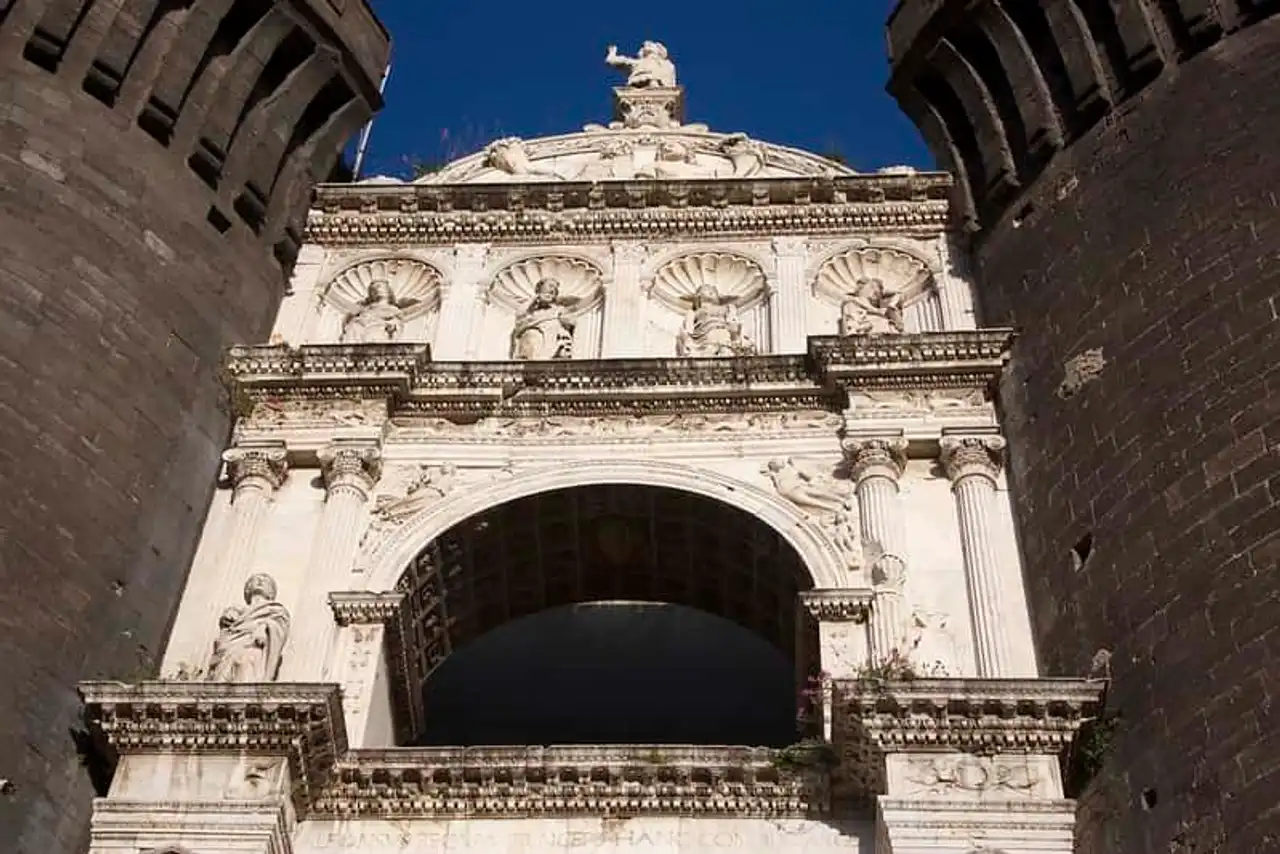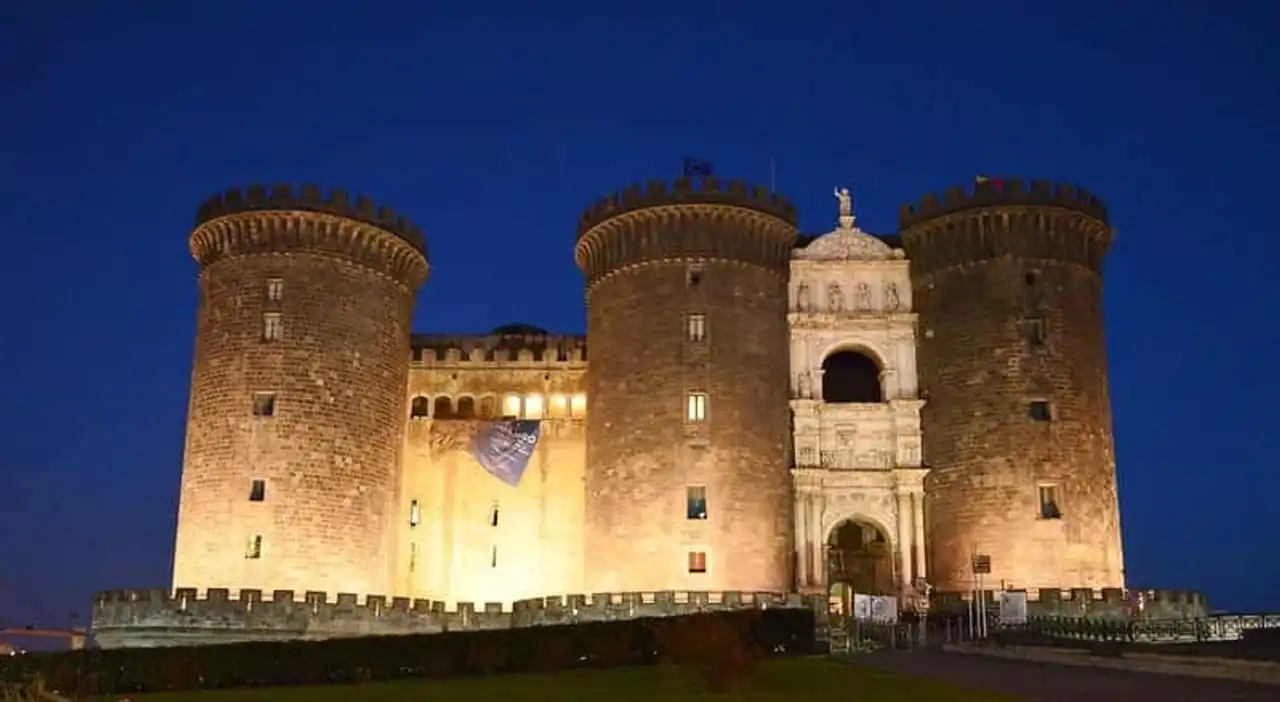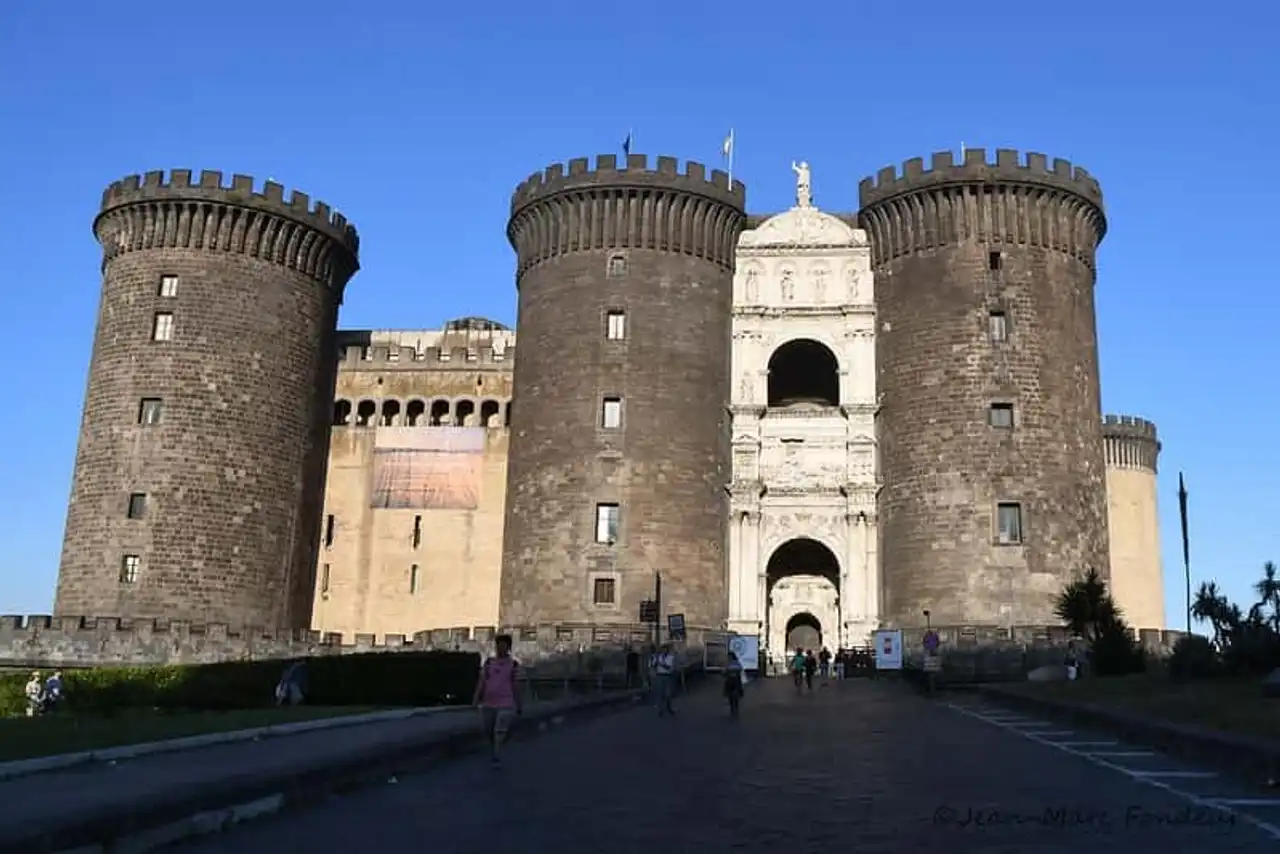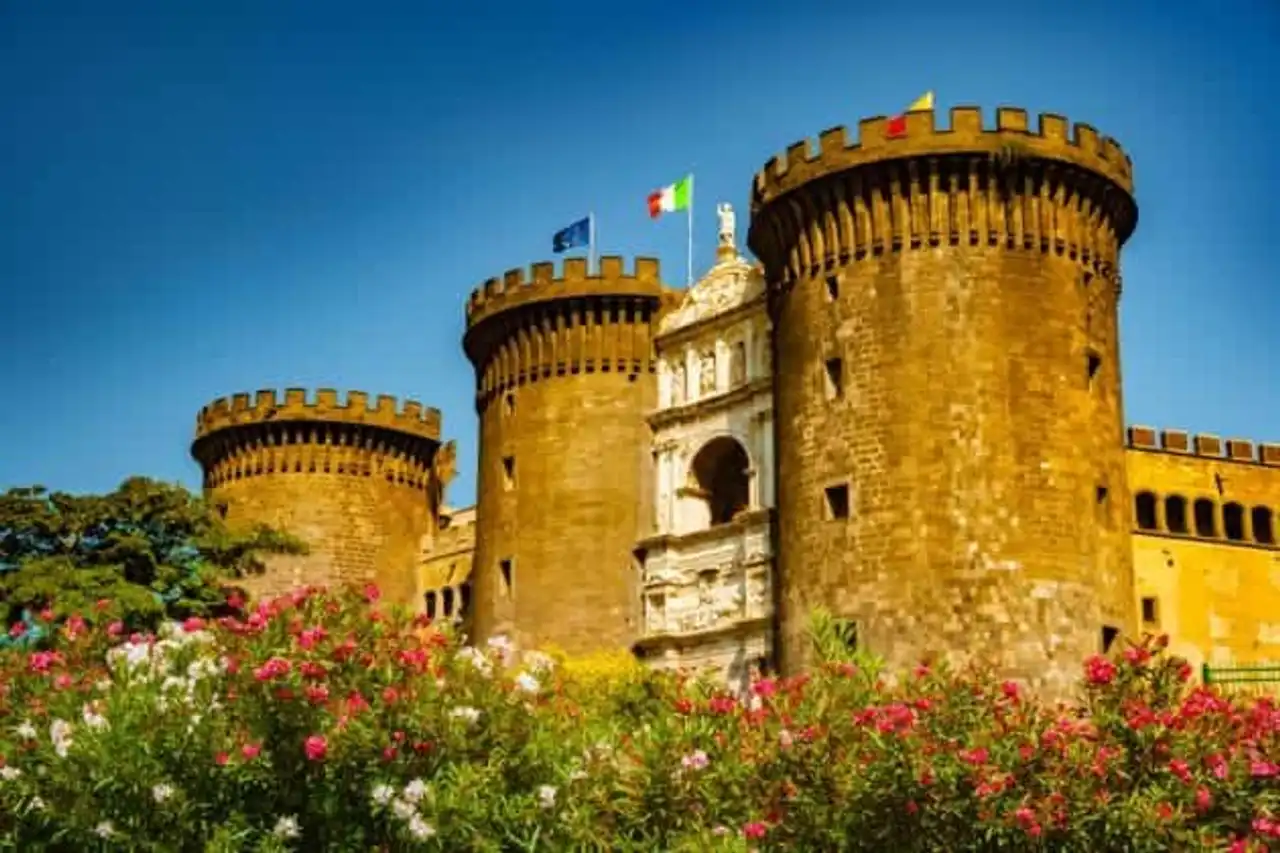Did you plan to visit the beautiful city of Naples? Discover our tour guide on Castel Nuovo, an emblematic monument of this beautiful Italian city!
Located in the aristocratic district of San Ferdinando, close to the port and the Royal Palace , Castel Nuovo is one of the historical symbols of the city of Naples. Built between 1279 and 1282, it has been extended or renovated several times since. The main symbol of the city’s architecture is Charles I d’Anjou which ordered its construction when the capital of the kingdom was transferred to Naples.
Imposing and surrounded by deep ditches, it is inspired by the castle of Angers. Unfortunately, it has preserved little aspects of this period of angels and is mainly the fruit of the Aragonese renovations of the 15th century. In spite of all, the Neapolitans still nickname it "angevin dungeon" or Maschio Angioino . The monument is today the seat of various Neapolitan and Italian organizations like the Museo Civico . Visit the Castel Nuovo will allow you to discover and learn more about an important piece of the history of Naples.
So what are you going to see in this “Château Neuf” who came to replace it Castel dell’Ovo as royal residence of the kings of Sicily and Naples? From its great history to practical information, through the schedules and rates, we devour everything you need to know to visit Castel Nuovo in Naples under the best conditions!
History of Castel Nuovo

Photo credit: Flickr – Nuno Cardoso
In 1266 Charles 1 of Anjou — the last son of the King of France Louis VIII — came to the throne of the Kingdom of Sicily, including the island and the southern part of Italy. Privileged Campania and its surroundings Sicily Charles 1 transfers the capital of the kingdom of Palermo to Naples.
Naples became capital, Charles d’Anjou ordered the construction of a new castle to welcome its courtyard. Its aim is above all to develop a strategic area, between the historic centre of Naples and the sea, and to move the headquarters of the power located at Castel dell’Ovo. Its name of Castel Nuovo (Château Neuf) is thus chosen to differentiate it from the two former royal residences, the Castel dell’Ovo and Castel Capuano .
Directed by French architects Pierre de Chaulnes and Pierre d’Angincour , the work began in 1279 and ended in 1282, when the Kingdom lost its Sicilian part and became only the “ Kingdom of Naples”. Because of the troubles in Sicily, the castle was not inhabited before the death of Charles 1 of Anjou in 1285. The successors of Charles 1 — notably Robert 1st — will continue to enlarge and beautify the castle, including the construction of the Palatine chapel , one still visible mark of the passage of the Angevine Dynasty.
In the 1330s, the war between Angevins and Aragonese caused significant damage to the castle. The latter will also be be besieged and damaged by the Hungarians. In 1442, the kingdom of Naples passed into the hands of the Aragonese who then largely restored and restored the Castel Nuovo.
In the 15th century, Castel Nuovo became the largest fortified royal residence of his time. Alphonse V modernize the fortress to resist the new artillery: the original square towers are replaced by circular towers. In addition to military developments, Alphonse embellishes the castle. The work is entrusted to Guillem Sagrera. We owe her the beautiful Salle des Barons , which holds its name from the arrest of the nobles who plotted against the successor of Alfonso V of Aragon: his illegitimate son Ferrante, who became Ferdinand 1st of Naples .
Decorated by Fr. Johan and Guillem Sagrera, the monumental triumphal arch at the entrance of the castle is the most remarkable design desired by King Alfonse. He celebrates, through his bas-relief, the triumphant entry to Naples of the new sovereign. This construction involves famous artists from the time, such as Milan. Pietro di Martino and Dalmatian Francesco Laurana .
With the disappearance of the Aragonese dynasty following the Italian Wars, the castle loses its status as a royal residence and becomes a fortress, certainly important but now less prestigious. Several times redesigned, it finds its present appearance when it is acquired and renovated by the Commune of Naples at the end of the 19th century. Nowadays, it houses different bodies, like Museo Civico which gathers works inherited by the Commune, as well as Società Napoletana di Storia Patria which publishes publications and manages a library on the history of Naples and its province. The Barons room also hosted the headquarters of the Naples Municipal Council until 2006.
What to see and do at Castel Nuovo in Naples?

Photo credit: Flickr – kaysgeog
First of all, your visit to Castel Nuovo in Naples will start with a discovery of the exterior enclosure of the castle . You can observe the round path and the powerful crenel towers of the time, with their steep bases, built so to make almost impossible any frontal assault. These developments date from the Aragonese era. The deep ditches surrounding the castle will convince you of the military power of this fortress.
After a small tour around the Castel Nuovo, you can attarder in front of the remarkable triumphal bow the entrance door on the city side. Built to celebrate Alfonse 1st, the first Aragonese king of Naples, it is one of the most beautiful examples of the Renaissance architecture of the city. You will also notice that the large niche on the second floor is strangely empty. According to some specialists, she was to welcome a horse sculpture, commissioned by the great sculptor Florentin Donatello but remained unfinished. The head of the sculpture is preserved in the National Archaeological Museum .
Your visit will continue in the inner courtyard . At the bottom, a staircase will lead you to the magnificent Baron Hall, whose beautiful vault adorned with a network of stars warheads is Spanish Gothic style. You can then access a panoramic terrace, offering a sublime view of the city and the bay.
Before leaving the Castel Nuovo, you can also discover the Museo Civico . From the 16th to the 19th, as well as many sculptures and objects of religious art, await you.
How to go to Castel Nuovo in Naples?
The Castel Nuovo in Naples is located in Piazza Municipio. To visit it, you will have to go to the neighbourhood San Ferdinando at the following address: Via Vittorio Emanuele III, 80133 Napoli NA, Italy .
By public transport
Metro station Municipio is located two steps from the Castel Nuovo . It is served by the main and tourist metro line of Naples . You will therefore have no trouble reaching the castle from another area of the historic centre.
By car or taxi
You can also go to the castle by car or by taxi. Places are rare and paid. However, there are several paid and supervised parking spaces in the vicinity of the castle.
If you want to rent a car on site, don’t hesitate to go by Rentalcars to facilitate your search.
Also to be read : Cheap car park in Naples: where to park in Naples?
Prices of Castel Nuovo in Naples

Photo credit: Flickr – CpaKmoi
HORARI
It is possible to visit the Castel Nuovo in Naples daily from 8:30 a.m. to 7 p.m. , except Sunday.
RATES
- Full fare: 6 €
- The ticket office closes one hour before the visits end. After this schedule, access to the building is no longer possible.
Good to know.
- The high-speed schedules are from 10H to 12H Monday to Saturday. The castle also records peaks of visits on Wednesday. – Allow at least one hour to visit Castel Nuovo. - It would appear that the visit of the castle is not suitable for persons with reduced mobility or with disabilities. - The area around Castel Nuovo is full of monuments and places to discover after your visit: the Teatro San Carlo, Royal Palace of Naples, Giardini del Molosiglio, charming palaces and churches of Spanish Quarter. - You can also walk to the Castel dell’Ovo to enjoy stunning views of Naples and its bay. This castle is like the Castel Nuovo, an emblematic and historical monument of the Italian city.








Loading comments ...